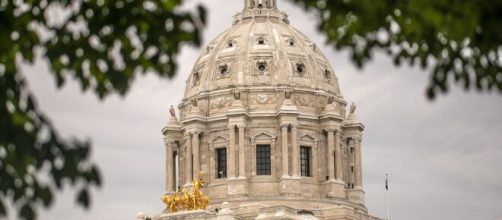In many countries around the world, secession gets brought up frequently. Typically, it's on a national level. Essentially, the question is if one region of a country will become an independent nation of its own.
But in some areas of America, the debate has intensified over matters regarding state identity. In-state political differences are nothing new. But things could be taking a new and different twist.
Legislator introduces bill to break up Minnesota, increase the size of South Dakota
Minnesota State Representative Jeremy Munson has put forward a provocative bill.
It's officially called HF 2423. If it were to be successful, it would begin a potentially drastic process. One that would change the states of Minnesota and South Dakota as they've been known for decades.
The bulk of Minnesota's landmass would join with South Dakota, leaving behind eastern and some central regions of what would theoretically be its former state. The seceding counties would be largely rural. For metropolitan hubs such as Minneapolis, Saint Paul, and Duluth, the state affiliation would remain the same.
Munson says his reasoning for the move is political polarization. He apparently believes that the interests of rural Minnesota are no longer adequately represented in the state legislature.
Munson was first elected to the Minnesota House of Representatives in a 2018 special election. He has been re-elected twice since then. His previous roles include chairing the Republican Party of Blue Earth County, Minnesota, which includes Mankato.
If the two states' proposed re-organization actually happened, South Dakota would gain a significant population boost. As of current statistics, the theoretical "new" South Dakota's population would be more than twice the "old" one's size. However, the combined population would still be less than that remaining in "new" Minnesota.
Aside from the drop in population, there would be other concerns for the counties in question. Such as whether or not the economies thrown together would mesh well with each other.
And while the cultures might seem relatively in sync at first glance, some clashes would almost certainly emerge.
A change in South Dakota's capital might also be in order. Traditionally, but not always, capitals are at the relative geographic center boundaries they serve. South Dakota's current capital would no longer fit that description. Furthermore, it would be a great distance from some of the new state's metro areas. However, this might not be as big of a concern in the modern era.
Would require state and national approval
Munson's bill is not expected to amount to much of anything in reality. Minnesota Public Radio News bluntly calls it a publicity stunt. It may indeed be a bit much to expect approval from both state legislatures and the United States Congress.
The bill does apparently have at least one very high-profile backer in South Dakota, Governor Kristi Noem. She tweeted her apparent support for it. A similar move could be brewing in Oregon, where some have floated seceding in favor of joining Idaho, per KEVN.


